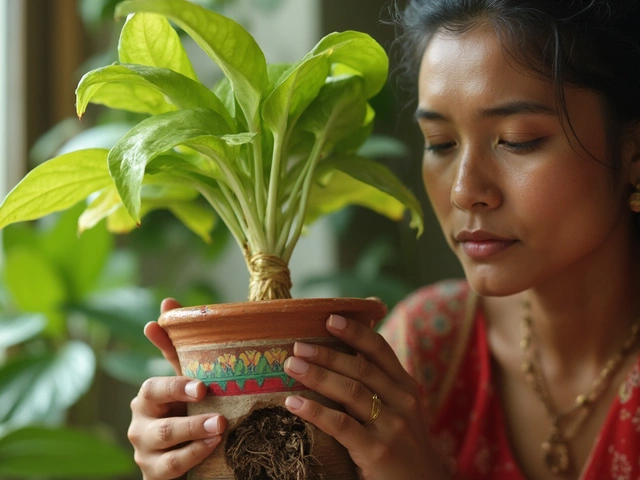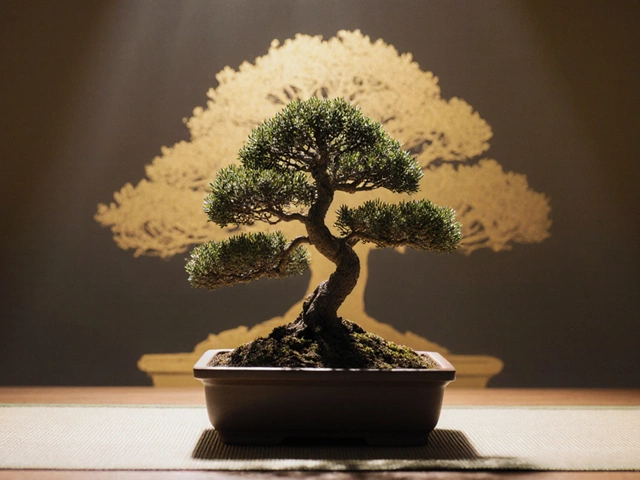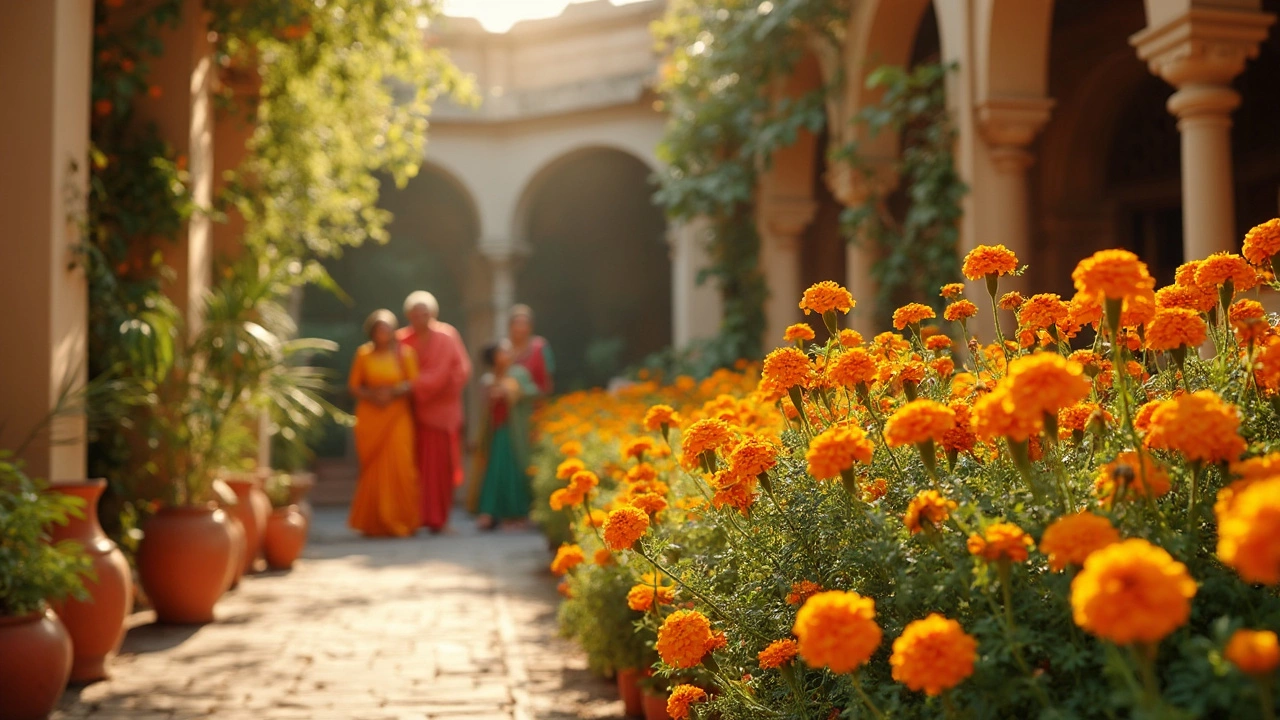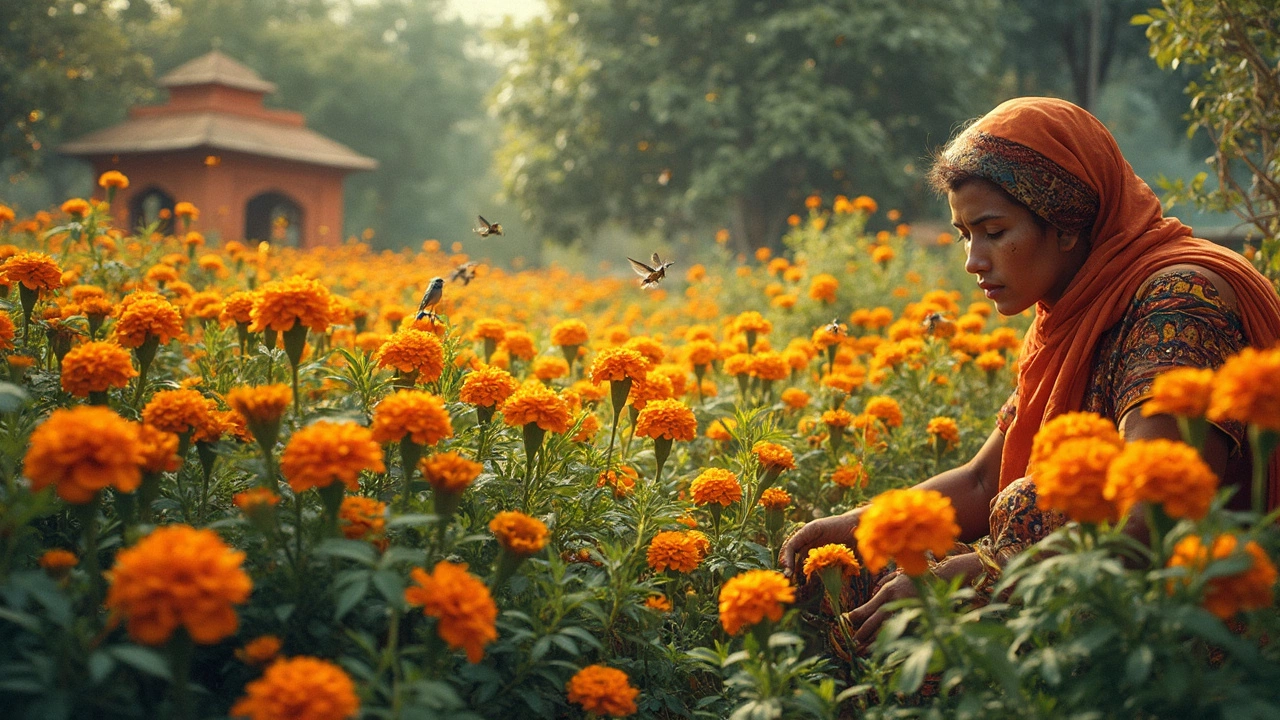Marigold: Bright, Lucky, and Easy-to-Grow Flower for Indian Gardens
Marigold (Tagetes) is hard to miss in any Indian garden. Its orange‑yellow blooms pop up almost everywhere, from temple courtyards to balcony pots. People love it because it’s cheap, hardy, and believed to bring good luck. If you’re wondering whether a marigold can fit your space, the answer is a big yes – you just need a few simple guidelines.
First off, marigolds love the sun. Plant them where they get at least six hours of direct light daily. They thrive in well‑draining soil, but they’re forgiving – a regular garden mix works fine. Adding a handful of compost improves water retention and gives the plants extra nutrients, which translates to bigger, richer flowers.
How to Grow Marigolds Successfully
Start by sowing seeds directly in the ground after the last frost. Space each seed about 30 cm apart so the plants have room to breathe. If you’re using containers, choose pots at least 20 cm deep and fill them with a light potting mix. Water the seeds gently until they sprout, then keep the soil moist but not soggy. Over‑watering is the most common mistake; marigolds prefer the soil to dry out a bit between watering.
Fertilize once a month with a balanced NPK (10‑10‑10) formula, or simply sprinkle a bit of compost around the base. Pinch off the first set of flower buds when they appear – this encourages the plant to branch out and produce more blooms later. Keep an eye out for pests like aphids or spider mites; a quick spray of neem oil or a handful of ladybugs usually does the trick.
One surprising tip: stay away from coffee grounds. While many gardeners love using coffee sludge as fertilizer, marigolds actually hate it. The acidity can interfere with nutrient uptake, leading to yellowing leaves. Stick to organic compost or well‑rotted manure instead.
Marigold in Indian Culture and Garden Design
Marigolds have a special place in Indian traditions. They’re a staple at weddings, pujas, and festivals such as Diwali and Navratri. The bright color is thought to repel negative energy and attract prosperity, which is why you’ll often see garlands made of marigold draped over idols and doorways.
Beyond rituals, marigolds are great for natural pest control. Plant them alongside vegetables like tomatoes or cabbage, and they help deter nematodes and certain beetles. This companion‑planting trick saves you from using chemical sprays and keeps your garden eco‑friendly.
When the season ends, you can dry the flowers and use them for potpourri or as a natural dye for fabrics. The dried petals release a mild, pleasant fragrance that keeps moths away from stored clothes. So even after the garden’s color fades, the marigold continues to be useful.
In short, marigolds are a low‑maintenance, multi‑purpose plant that fits almost any Indian garden style. With a bit of sunlight, proper watering, and simple pest checks, you’ll have a burst of golden color that also brings cultural charm and a touch of luck to your home.
Most Popular Flower in India: Why the Marigold Reigns Supreme
Curious which flower tops the charts in India? This article digs into why the marigold stands out across gardens, festivals, and homes. Discover what makes it so beloved, plus learn some surprising facts and simple gardening tips. Great for both seasoned gardeners and folks just getting started. You'll get real insights on care, cultural value, and even practical hacks for making marigolds thrive.
Discover India's All-Season Wonder: The Marigold
Marigolds stand as a testament to resilience, thriving in the varied climates of India all year round. Known for their brilliant orange and yellow hues, these flowers not only add color to gardens but also repel pests. Easy to plant and maintain, marigolds are ideal for gardeners looking for minimal hassle. Explore how these vibrant plants can bring year-long joy and practicality to your outdoor space.
About
Flower Gardening, Seasonal Plants
Latest Posts


Does Hydrogen Peroxide Help Root Rot? The Real Story for Indoor Plants
By Alden Thorne May 2, 2025

Best Liquid to Water Plants: What Actually Works?
By Alden Thorne May 9, 2025

What Is the Golden Rule of Bonsai? Explained
By Alden Thorne Oct 10, 2025


